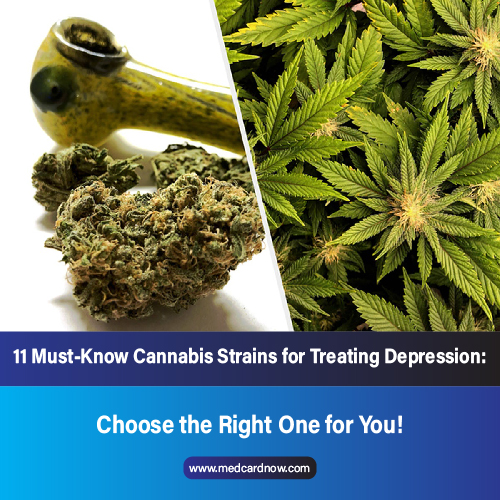
If you’re one of the millions of Americans struggling with depression, you may be considering using cannabis to help ease your symptoms. Depression is a complex condition, and there is no one-size-fits-all solution. However, certain cannabis strains can be helpful for treating depression.
In this blog post, we’ll share 11 must-know cannabis strains for treating depression. We’ll also provide guidance on choosing the right strain for you, as well as tips on how to use cannabis for maximum benefit.
Depression is a complex condition that affects millions of Americans. There is no one-size-fits-all solution, but certain cannabis strains can be helpful for treating depression.
Depression is a serious condition that can have devastating effects on an individual’s life. It is more than just feeling a bit down or sad. it also can lead to:
- changes in behavior
- feelings of hopelessness and lack of motivation
- difficulty sleeping and eating
- as well as feelings of guilt or worthlessness.
Unfortunately, depression can be difficult to treat and many individuals turn to medications such as:
- Antidepressants or therapy to help manage their symptoms.
However, there is another option that has become increasingly popular – the use of cannabis for treating depression.
Use of Cannabis for treating depression
Cannabis is a plant-based medicine with a long history of therapeutic use for various conditions including pain and inflammation. More recently, it has also been studied for its potential antidepressant effects. Studies have shown that certain cannabinoids in cannabis can help reduce symptoms of depression by modulating the endocannabinoid system. This system plays an important role in regulating emotion and mood. Research into the use of cannabis for treating depression has been encouraging. So, it suggests that certain strains may be helpful in alleviating depressive symptoms.
When selecting a cannabis strain for treating depression, it’s important to consider the type and ratio of cannabinoids in the strain. Cannabinoids such as THC (tetrahydrocannabinol) and CBD (cannabidiol) are familiar for their medicinal properties. However, they interact differently with the body so choosing the right combination is key for optimal results. Strains high in THC can provide fast-acting relief from mood swings, while CBD-dominant strains offer more subtle effects over time. Additionally, some evidence suggests that using a combination of both can be beneficial for managing depressive symptoms.
No matter what strain you choose though, it’s important to remember that finding the right dose. So, it is key when it comes to using cannabis as an effective treatment for depression. Start low and go slow until you find your ideal dosage. Too much THC can actually have negative effects on mood rather than helping them improve.
Lastly, if you decide to try cannabis as an alternative form of treatment for your depression make sure to contact your healthcare provider first. So that, they can ensure it’s safe and appropriate given any other medications or conditions you may have.
5 must-know cannabis strains for treating depression:
Cannabis was useful to treat depression for centuries. In recent years, science has begun to catch up with what many people have long known – that cannabis can be an effective treatment for depression.
There are many different strains of cannabis, and each one can have different effects on the body and mind. Some strains are more energizing while others are more relaxing. Some strains can promote creativity while others can help you focus. And some strains are better at treating depression than others.
Here are 5 must-know cannabis strains for treating depression:
1. Blue Dream
Blue Dream is a popular sativa-dominant hybrid that is popular for its happy and uplifting effects. This strain is perfect for daytime use, as it can help to increase energy levels and improve mood. If you’re struggling with fatigue or low energy levels due to depression, Blue Dream could be a good choice for you.
2. Sour Diesel
Sour Diesel is another sativa-dominant hybrid that attracts many for its ability to boost mood and energy levels. This strain is perfect for those who need an extra boost in the morning or during the day. If you find yourself feeling down or blue, Sour Diesel could be just what you need to pick yourself up.
3. Green Crack
Green Crack is a sativa-dominant strain to give users a burst of energy and focus. If you’re struggling with fatigue or brain fog due to depression, Green Crack could be a good choice for you. This strain can also help to improve mood and lift spirits.
4. OG Kush
OG Kush is a popular indica-dominant strain for its relaxation properties. If you’re struggling with anxiety or stress due to depression, OG Kush could be a good choice for you. This strain can also help to improve sleep quality, which is often impaired in those with depression.
5. Granddaddy Purple
Granddaddy Purple is another popular indica-dominant strain for its ability to induce relaxation and calmness. If you’re struggling with insomnia or poor sleep quality due to depression, Granddaddy Purple could be a good option. This strain can also help to reduce anxiety and improve mood.
How to choose the right strain for you:
When it comes to selecting the right cannabis strain for your needs, there are many factors to consider. With so many strains available, it can be difficult to narrow down which one is right for you. To make the process easier, here are some tips that can help you find the perfect fit:
One of the most important things to consider when choosing a strain is how it will affect you physically and mentally. Different cannabis strains contain different levels of tetrahydrocannabinol (THC) and cannabidiol (CBD). THC is responsible for producing psychoactive effects. On the other hand, CBD does not produce a high. It may provide relief from certain symptoms like pain or anxiety. Therefore, it’s important to understand how each strain can affect your body and mind before making a decision.
Terpene profile:
Another factor to consider when selecting a strain is its terpene profile. Terpenes are compounds found within cannabis plants. These compounds produce distinct aromas and interact with cannabinoids to create unique effects in the body. Certain terpenes have had a connection to different physical and mental effects. So, understanding a strain’s terpene profile can help you identify if it could be beneficial for your needs.
Finally, research any potential side effects associated with different strains before making a selection. Different strains can cause different reactions in people. So, it’s important to be aware of any potential adverse reactions they may have on your body or mind. It may also be worth talking with a healthcare professional or experienced cannabis user. They can give you advice tailored to your specific situation.
By understanding these key factors and researching different strains thoroughly, you should have no problem finding the perfect one for you!
Tips for using cannabis to treat depression:
Depression can be a debilitating condition that affects many aspects of life. It is important to remember that several treatment options are available for those suffering from depression, including the use of cannabis. In recent years, it has come as a suggestion that cannabis might be an effective way to treat symptoms of depression, although further research is needed to confirm this.
Use of THC:
The active ingredient in cannabis responsible for creating its effects is known as THC or tetrahydrocannabinol. This substance can help to alleviate certain symptoms associated with depression such as low mood and lack of motivation by acting on the endocannabinoid system in the brain. Specifically, THC binds to CB1 receptors in the brain, which causes a release of dopamine and other neurotransmitters that can improve mood and reduce anxiety. Research has also found evidence of reduced inflammation in the body which can lead to lower levels of stress hormones like cortisol, resulting in improved mental health.
Use of doses:
It’s important to note that using cannabis as a treatment for depression should only be done under supervision from a medical practitioner. Dosage should also be monitored since too much can have an adverse effect on mental health and cause paranoia or anxiety. Different forms and methods of consumption also need to be taken into consideration; smoking may not necessarily be the best option if one wishes to experience the full range of benefits provided by cannabis-based treatments. Edibles, tinctures and vaporizers are all alternative ways to consume cannabis while minimizing any potential risks associated with inhalation.
Lastly, it’s essential for those using cannabis for therapeutic purposes to remain aware of their own reactions and responses when consuming it. It’s possible for someone’s individual response to vary dramatically from others; consequently it’s important for any potential user to listen carefully to their own body before proceeding with any kind of dosing regime or particular method of use.
Conclusion: Cannabis can be a helpful tool for treating depression, but it’s important to choose the right strain and use it correctly.
When it comes to treating depression, cannabis can be a helpful tool. Cannabis can help reduce symptoms such as anxiety, insomnia and even chronic pain, which is often associated with depression. However, it’s important to choose the right strain and use it correctly in order to get the desired results. Different strains of cannabis have different effects on mood and behavior, so it’s important to find the one that works best for you. It’s also essential to use this powerful herb responsibly; consuming too much can lead to serious side effects that are counterproductive when it comes to treating depression.
For those who suffer from depression, consuming cannabis can provide relief from some of its most difficult symptoms. Cannabis has been known to reduce anxiety and stress, allowing those suffering from depression to relax and gain back some control over their emotions.
Improve sleep:
Furthermore, cannabis has been found to improve sleep quality by reducing insomnia-related issues such as racing thoughts or restlessness. Finally, research has shown that cannabis can help reduce chronic pain which is often associated with depression as well.
When using cannabis for treating depression, it’s important to remember that finding the right strain is key. Different strains contain different levels of THC (tetrahydrocannabinol) and CBD (cannabidiol). Both of which have different effects on mood and behavior. Generally speaking, strains high in CBD tend to produce more calming effects. On the other hand, strains high in THC may produce more energizing and uplifting effects; finding the strain that works best for you may require trial and error before achieving success.
Finally, using cannabis responsibly is just as important as finding the right strain when using it for treating depression; consuming too much can actually make your symptoms worse instead of better. As always with any medication or treatment option for mental health conditions such as depression, it’s best to check in with your doctor before beginning any new regimen involving cannabis consumption.
Depression is a complex condition that affects millions of Americans. While there is no one-size-fits-all solution, certain cannabis strains can be helpful for treating depression. In this article, we’ve shared 5 must-know cannabis strains for treating depression, as well as some tips for choosing the right strain and using it correctly. Cannabis can be a helpful tool for treating depression, but it’s important to choose the right strain and use it correctly. For more information on how to treat depression with cannabis, read our full article here.



